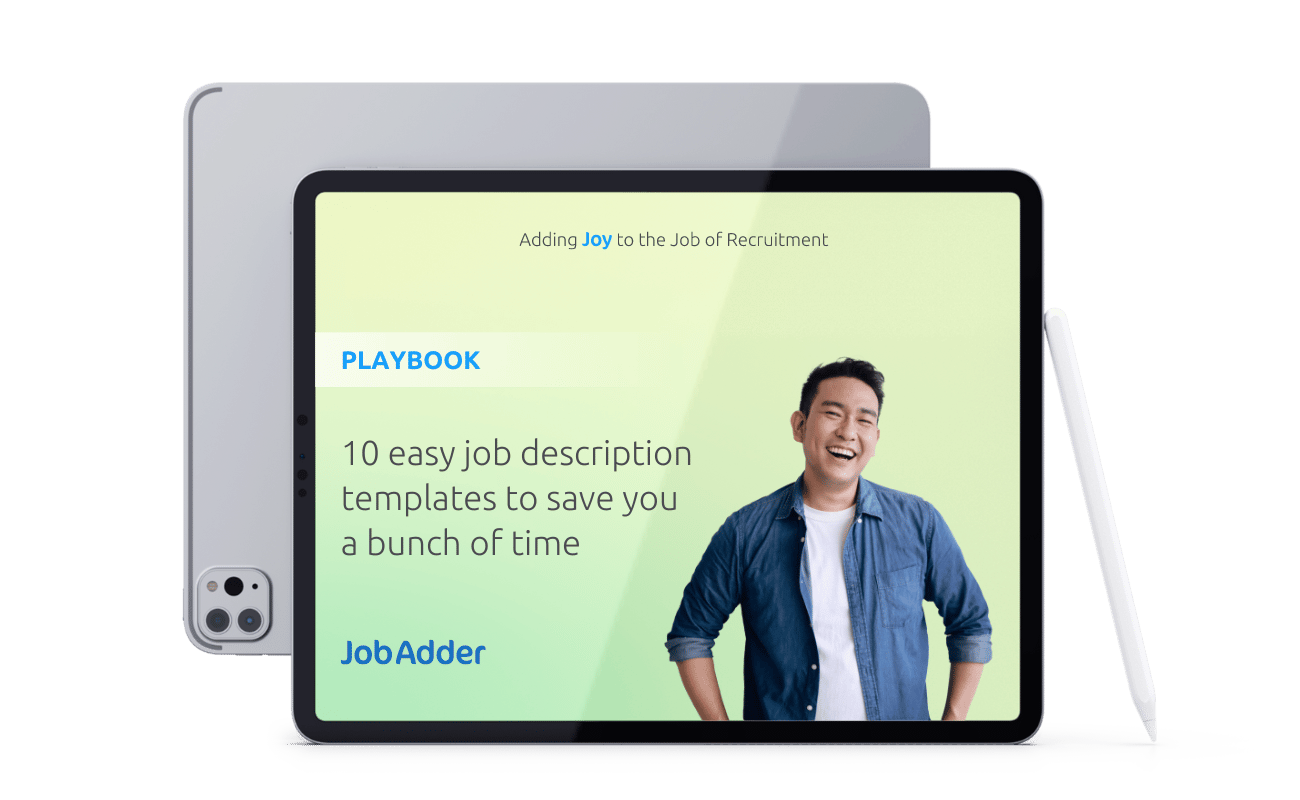Free playbook download
10 easy job description templates to save you a bunch of time

We know that you’re incredibly busy trying to source, attract, engage and hire the best talent out there.
So, we thought we’d help out with some easy job description templates that you can use to streamline the job posting process!
While you’ll need to add your special sauce, whether that’s adding your company’s fun tone of voice, promoting the cool benefits you offer or emphasising the importance of diversity and inclusion, these job description templates can act as a great starting point.
Fill out the form to download the free playbook and access:
- Job description for an Account Manager
- Job description for a Sales Manager
- Job description for a Business Manager
- Job description for a Product Manager
- Job description for an Operations Manager
- Job description for a Project Manager
- Job description for an Office Manager
- Job description for an Executive Assistant
- Job description for a Marketing Manager
- Job description for an Event Manager